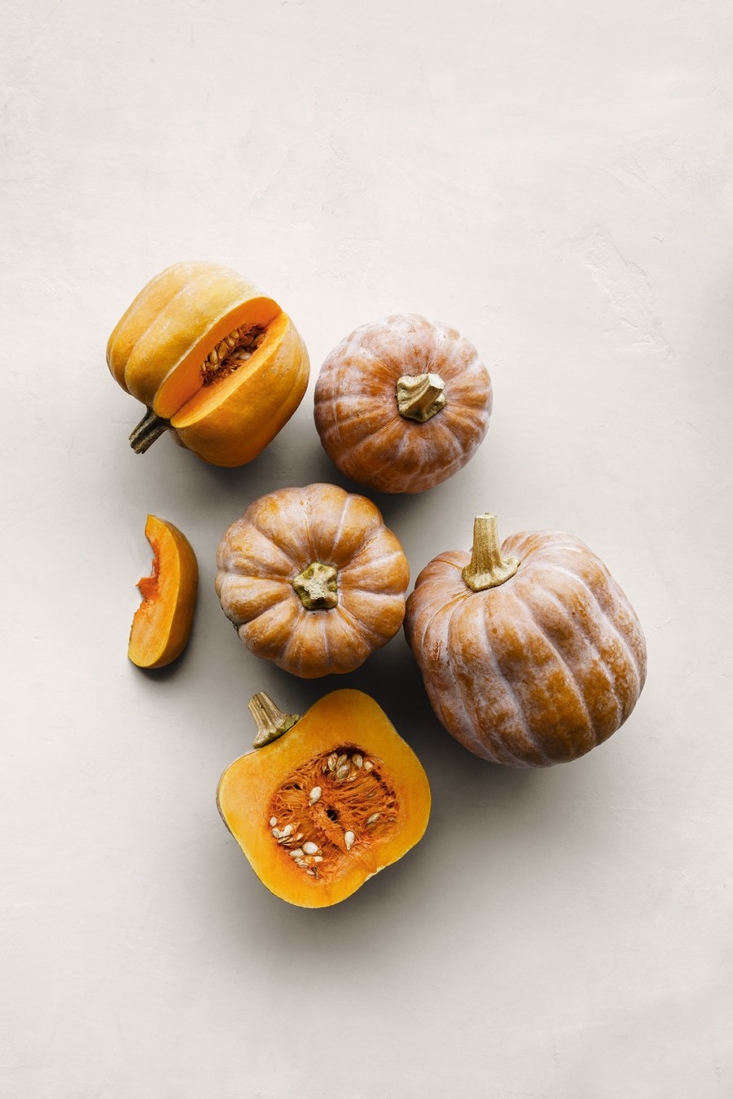Chef Dan Barber has a thing for gourds—and tubers, and peppers, and … well, just about any vegetable he serves at his sustainable-foods restaurant Blue Hill at Stone Barns in New York’s Hudson River Valley.
For the recent launch of Row 7, his new seed company, Barber and co-founder Michael Mazourek came up with a list of seven edible plants that are the best-tasting versions of themselves. If you plant Row 7’s Koginut squash seeds, you won’t just be growing squash. You’ll be growing a cross, specially bred by plant-science professor Mazourek at Cornell University with “a flavor that’s sweet, intensely squash-y and totally delicious.”
Here’s a cheatsheet to Row 7’s first crop of bespoke vegetables and very special trial varieties:
Flame Beets

Why: Beta vulgaris triumphs above all others: “All the vegetal sweetness of the beet, without the polarizing earthiness—the brilliant Badger Flame is here to redeem the beet’s dirty reputation.”
How: Direct sow (four to five weeks before the last frost) ½ inch deep. Or start seeds indoors five to seven weeks before last frost and transplant seedlings at two to three weeks.
When: 80 days to maturity (55 days if you like to harvest small beets).
New Potatoes

Why: Not just an everyday Solanum tuberosum: “Cooks coveted its exceptionally creamy texture and nutty flavor.”
How: Direct sow 2-3 inch deep in mid to late spring (“will tolerate cool soil and frost”).
When: 100 days to maturity; (harvest at 75 days for new potatoes).
Koginut Squash

Why: This Cucurbita moschata is “an arranged marriage between two of our favorite squash, this stately little pumpkin offers the best of both: sweetness, smooth texture, storability, yield and a built-in ripeness indicator.”
How: Direct sow (after the last frost) ½ inch deep. Or start seeds indoors and transplant seedlings when soil temperatures reach 70 degrees Fahrenheit.
When: 110 days to maturity.
Cucumbers

Why: This experimental variety of Cucumis sativus is “a stubbled green slicer of modest stature but memorable flavor.”
How: Requires well-drained soil and warm temperatures; sow ¼-½ inch deep after last frost, when soil temperatures reach at least 70˚F.
When: 58 days to maturity.
898 Experimental Squash

Why: Your new Curbita moschata crush, this is a mini butternut squash that “packs concentrated sweetness, flavor, and beta-carotene into a squash that fits in the palm of your hand.”
How: “Cover young plants to increase early growth and protect from insect pests. Remove covers at flowering to ensure pollination and fruit set.”
When: 110 days to maturity.
Habanada Peppers

Why: These Capsicum chinense are related to habanero peppers, but without the tongue lashing: “Heatless—the result of a natural mutation in the field.”
How: Peppers need support to grow; provide trellises and cover young plants against the cold (until temperatures surpass 85 degrees Fahrenheit).
When: 100 days to maturity; (harvest at 70 days for green peppers).
Butternut Squash

Why: This is a Curbita moschata worth waiting for: “Designed to bring the best qualities of the Honeynut to the processing industry, Butternut 661 offers the same concentrated flavor, dry matter and beta-carotene in a larger, longer-storing package.”
How: Currently available to trial for “large-scale processors.”
When: 110 days to maturity.
Starting a vegetable garden from scratch? See more growing and design tips at Edible Gardens: A Field Guide to Planting, Care & Design. See our archives of Plant-Based Diet recipes and read more:
- 10 Ideas to Steal from Chefs’ Gardens Around the World
- Everything You Need to Know About Herb Gardens
- Edible Plants: A Field Guide to Growing, Care & Design
- Eat Your Vegetables: The Salad Garden by Joy Larkcom
- Ask the Expert: Winter Garden Tips from Stone Barns Center












Have a Question or Comment About This Post?
Join the conversation (0)